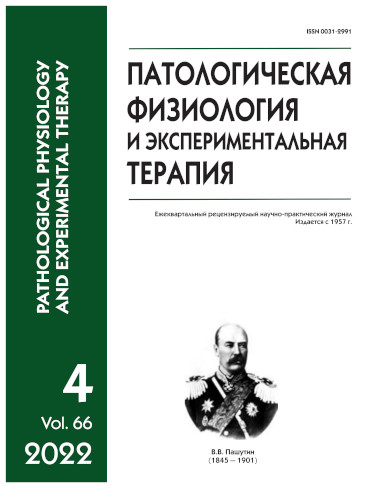Mutant Ataxin-1 with an abnormally expanded polyglutamine chain disrupts morphology and endocannabinoid-mediated synaptic plasticity in Purkinje cells of SCA1 model mice
Abstract
Background. Spinocerebellar ataxia type 1 (SCA1) is a neurodegenerative disease that affects the cerebellum and brainstem. It is the most common disease among autosomal dominant inherited ataxias in the Russian Federation. The disease is caused by expansion of CAG repeats in the coding region of the ataxin-1 protein gene. Previously, it was shown on a SCA3 model that CRAG is a molecule that limits the degradation rate of pathological forms of polyglutamine proteins. For this reason, the directed expression of CRAG may be a potential gene therapy for polyglutamine diseases. In this study, we characterized the electrophysiological abnormalities of mature SCA1 mice to elucidate the effect of pathological mutant ataxin-1 and the impact of CRAG expression on this process. Aim. To study the effect of the CRAG molecule on Purkinje cell (PC) morphology and endocannabinoid-mediated synaptic plasticity in the cerebellum of SCA1 model mice. Methods. In this study, we used a transgenic SCA1 murine model with the expression of the ataxin-1 protein gene with 82 CAG repeats. For the CRAG expression, mice were intravenously injected with the pAAV/MSCV-GFP-P2A-CRAG vector at the first or second postnatal day. The study was performed on 4-month-old CD1 mice, which were divided into three groups: control, wild type (WT); SCA1 model mice without the CRAG molecule expression (SCA1 CRAG (-)); and SCA1 model mice expressing the CRAG molecule (SCA1 CRAG (+)). We examined the effect of CRAG using electrophysiological studies: determination of passive and active properties of membranes and endocannabinoid-mediated environmental plasticity (SSE). Results. The mutant ataxin-1 expression decreased the cerebellar PC membrane capacitance, which led to decreases in the rise and decay times of the excitatory postsynaptic currents in PC synapses to parallel fibers. Also, SSE was altered in these synapses. It was found that the CRAG expression in SCA1 model mice partly restored the PC morphology and normalized SSE. Conclusions. SCA1 model mice show a pronounced impairment of PC morphology in the cerebellum. The CRAG expression provides restoration of PC morphology and synaptic plasticity.






